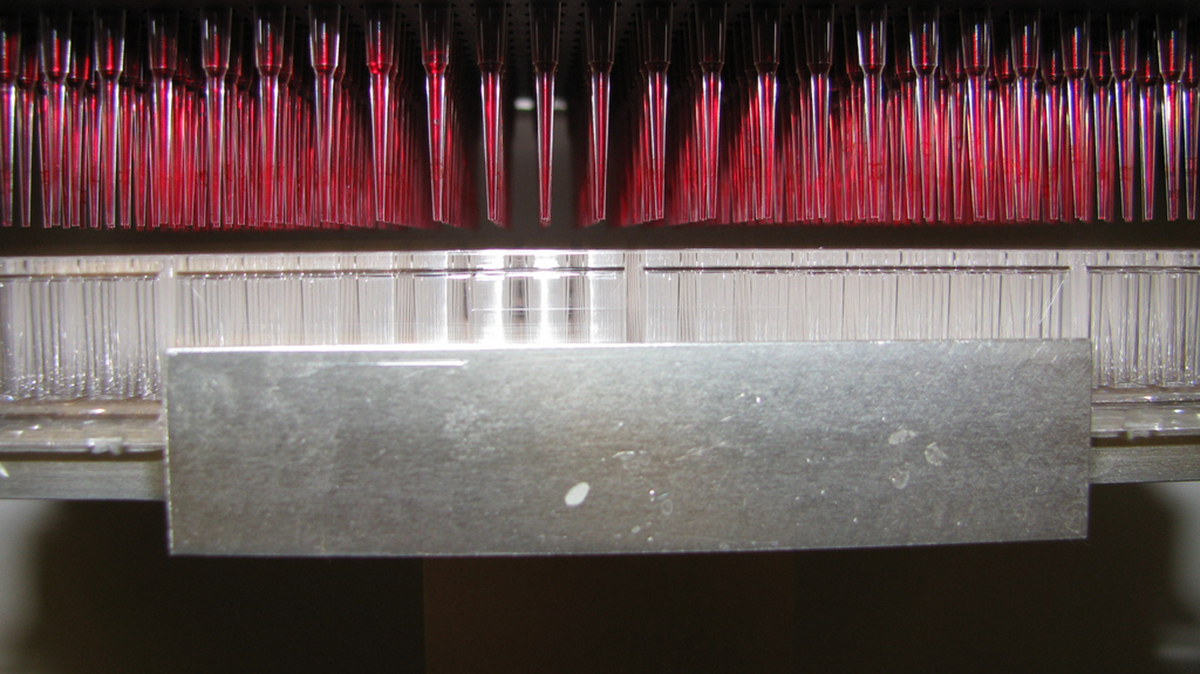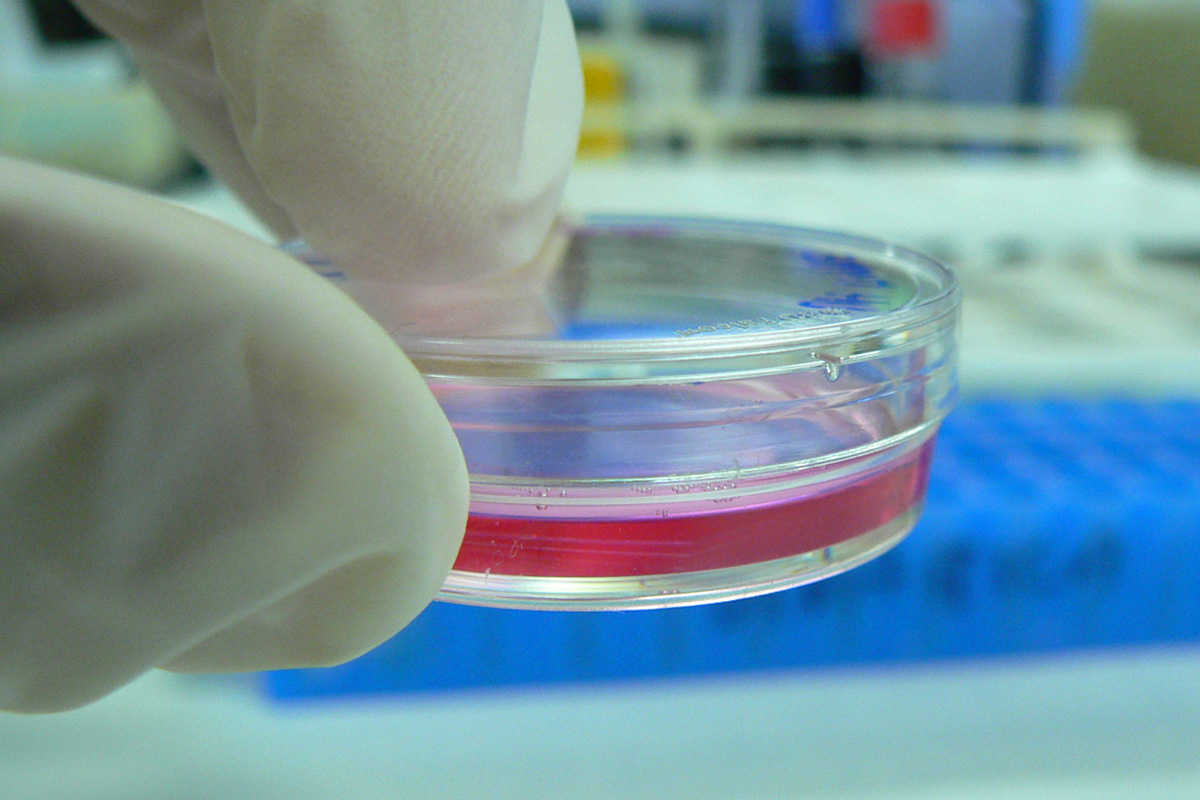A new and innovative method developed by the researchers at the EMBL-EBI, or The European Molecular Biology Laboratory’s European Bioinformatics Institute analyzes RNA sequence and lets the scientists detect previously unknown sub-types of cells. The discovery represents a giant step forward for single-cell genomics and it creates order out of what used to be considered seeming chaos.

What Is RNA?
All of the life on Earth uses three different forms of biological molecules and each one serves a very specific purpose within a cell. Proteins are the powerhouse and carry out a diverse array of roles, while nucleic acids, DNA, and RNA carry the genetic coding information that can be inherited from one generation to the next.
RNA stands for ribonucleic acid, and it is a polymeric molecule composed of one or more nucleotides. A person can think of an RNA strand like a chain, with a nucleotide at each link. Each nucleotide is composed of a base, a ribose sugar and a phosphate.
RNA is produced in the nucleus of a cell and can also be located in the cytoplasm. There are three primary types of RNA and these are messenger, transfer and ribosomal. Although it is single stranded, it can bend and twist into three dimensional shapes and hairpin loops. When these shapes occur, the nitrogenous bases bind to each other. Adenine pairs with uracil and guanine pairs with cytosine. The hairpin loops are most commonly witnessed in RNA molecules like messenger RNA and transfer RNA.
The structure of an RNA nucleotide is very much like that of DNA nucleotides, with the main difference being that the ribose sugar in RNA has a hydroxyl group that is not present in DNA. RNA plays a pivotal role in the pathway from DNA to proteins. During the transcription process, an RNA copy of a segment of DNA is made. This resulting strand can then be read by a ribosome to form a protein.
What Is DNA?
DNA or deoxyribonucleic acid is made of chemical building blocks called nucleotides and is located in the nucleus of cells. These building blocks are composed of three parts; a phosphate group, one of four nitrogen bases and a sugar group. To form a strand of DNA, nucleotides are linked into chains with the sugar and phosphate groups alternating.
The four types of nitrogen bases found in nucleotides are thymine, guanine, cytosine and adenine. The order of these bases will determine what biological instructions are contained within that particular strand of DNA. DNA can make a copy of itself. Both strands need to open up and make a copy of each other and become two strands of DNA. Hence, each new strand has one copy of the old DNA, from where the copy came from.
See Also: Do We Subconsciously Choose A Spouse Or Partner With Similar DNA?
DNA Differences
The Human Genome Project has estimated that each human has around 20,000 and 25,000 genes. Each person has two copies of each gene, one is inherited from the mother and the other is inherited from the father. These genes are mostly similar in all individuals, but a small number of genes are slightly different between people and this is what constitutes the basis for paternity testing and DNA testing.
What Is Mitochondrial DNA?
There is a small amount of DNA within the mitochondria of a cell. This genetic material is called mitochondrial DNA. Each cell has countless numbers of mitochondria that lie within the cytoplasm. Mitochondrial DNA has 37 genes that help ensure it functions right. Thirteen of these genes provide instructions for making enzymes involved in manufacturing energy production through a process called oxidative phosphorylation. The rest of the genes assist in making molecules called transfer RNAs and ribosomal RNAs that are essential to protein synthesis.

Single-Cell RNA Sequencing
Single-cell RNA sequencing is still a relatively new concept that helps medical researchers understand how genes are expressed in different tissue types and in cancers. The procedure provides data and feedback on the gene expression profiles of countless numbers of specific cells, all within a single experiment. It produces a precise portrait of the distinct cell types. However, the major difficulty of single-cell transcription profiles has presented a very real challenge with deciphering the information.
With single-cell genomics, scientists will take cells from a tissue and group them into different types based on their expression profile. Sub-types are then identified that could have a range of different roles. However, in order to do that correctly, there are many confounding factors to deal with and up until recently, researchers have not had the means to do that.
A sample from one kind of tissue has built in complexity; some cells are old while others are new. At any given time, the cells will be at different levels within the cellular cycle. Most cells have hidden sub-types and each one has its own unique and distinct function. The new single-cell latent variable model lets the unknown sub-structure of cells be distinguished and controlled, thus allowing pertinent biological signals to be more easily recognized.
Scientists have defined how factors such as cell-cycle stage, measurement noise or biological processes can be taken into account. This makes it possible to produce a more precise picture of genetic expressions in diverse cell types and sub-types. According to Florian Buttner, a scientist from the Institute of Computational Biology at Helmholtz Zentrum Muchen, combining single-cell analysis with statistical methodologies helps researchers to identify sub-types that may have in the past, gone completely unnoticed.
See Also: Scientists Can Identify DNA Changes That Signal The Existence Of Cancer Tumors
Oliver Stegel the Research Group Leader at the European Molecular Biology Laboratory’s European Bioinformatics Institute states, “If all you have is gene expression data from single cells, you need a way to identify and correct for the underlying factors that differentiate individual cells, so you can reveal the underlying biology.” The new model accounts for kinship between single cells, for example whether they are at the same stage of the cell cycle, classifies possibly perplexing variables and removes them. It also makes it much easier to find newer sub-types, variables which medical researchers may not have known previously existed, and to correct them all at the same time.
The differentiation processes and pathogenesis of various diseases like cancer, diabetes and heart disease can be better explored and understood when they are totally based on what is known through detailed cellular profiles. This new model now makes it possible to create these profiles using single-cell genomics.
- healthmanagement.org/c/lab/news/new-method-improves-genomics-analyses
- www.biologynews.net/archives/2015/01/20/hidden_cell_types_revealed.html
- www.sciencenewsdaily.org/microbiology-news/cluster698882070/
- exploringorigins.org/rna.html
- http://www.genome.gov/25520880Photo courtesy of igemhq via Flickr: www.flickr.com/photos/igemhq/4942804074
- Photo courtesy of Kaibara87 via Flickr: www.flickr.com/photos/kaibara/3075268200


Your thoughts on this